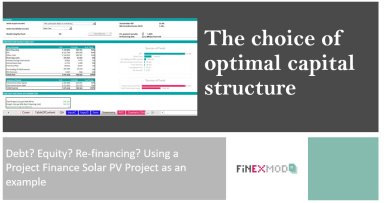
Originally published: 02/03/2021 18:02
Publication number: ELQ-83383-1
View all versions & Certificate
Publication number: ELQ-83383-1
View all versions & Certificate

Project Finance Solar PV model with re-financing
An advanced financial model for a project finance solar project and also include the analysis of the financing structure
Further information
identify the project's optimal capital structure and test the impact of different mix of equity and debt to fund the construction phase and impact of refinancing post construction.








